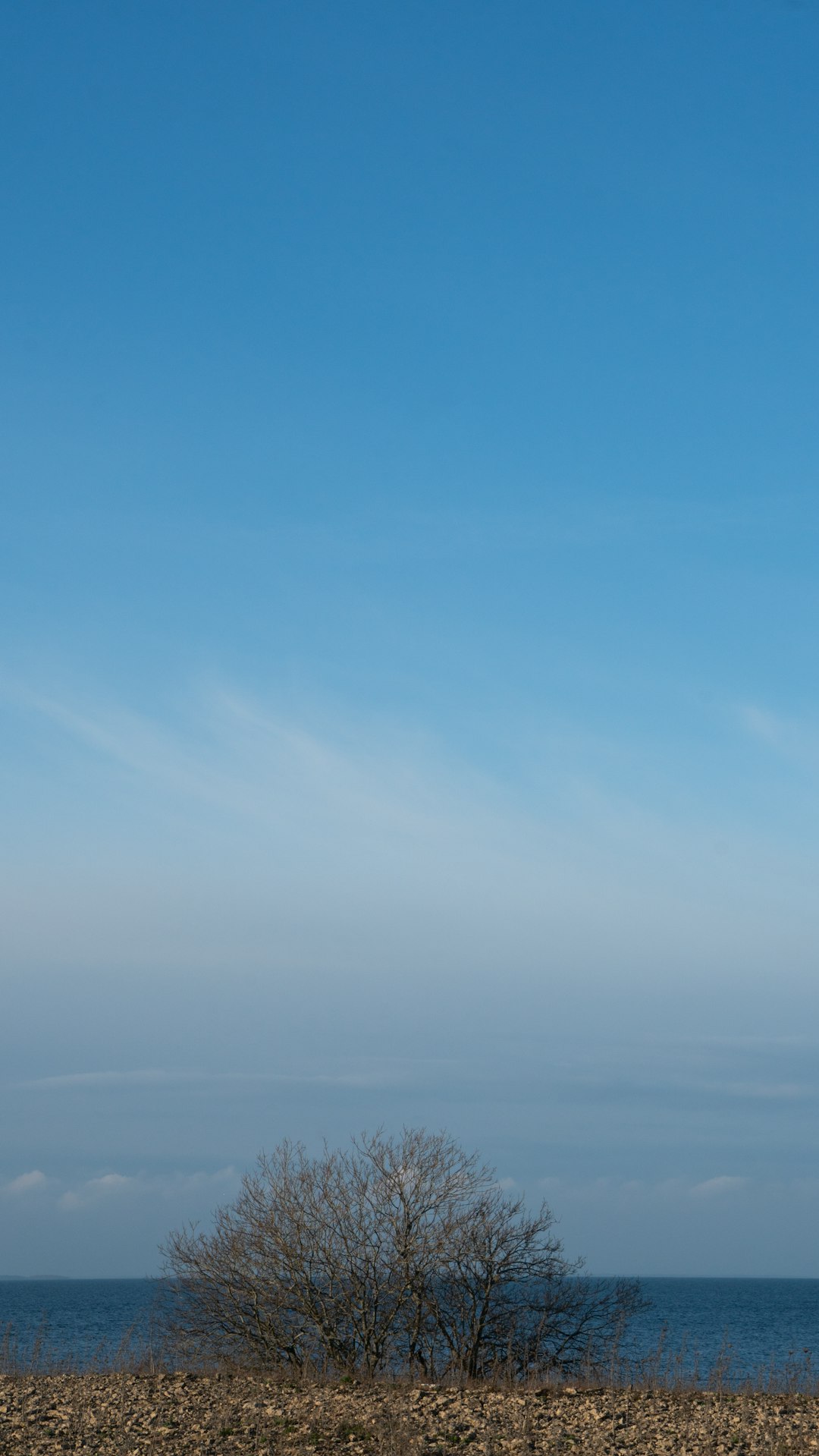The Olomouc Region Film Office and the Zlin Film Offices joined forces and put together a two-day tour for filmmakers filled with fantastic film locations and unusual experiences. The archdiocesian monuments in Olomouc and Kromeriz alternated with new discoveries in Prostejov, Plumlov, Tovacov, and Krelov. Filmmakers established contacts with representatives of the regional film offices and management of the locations.
27. May 2022

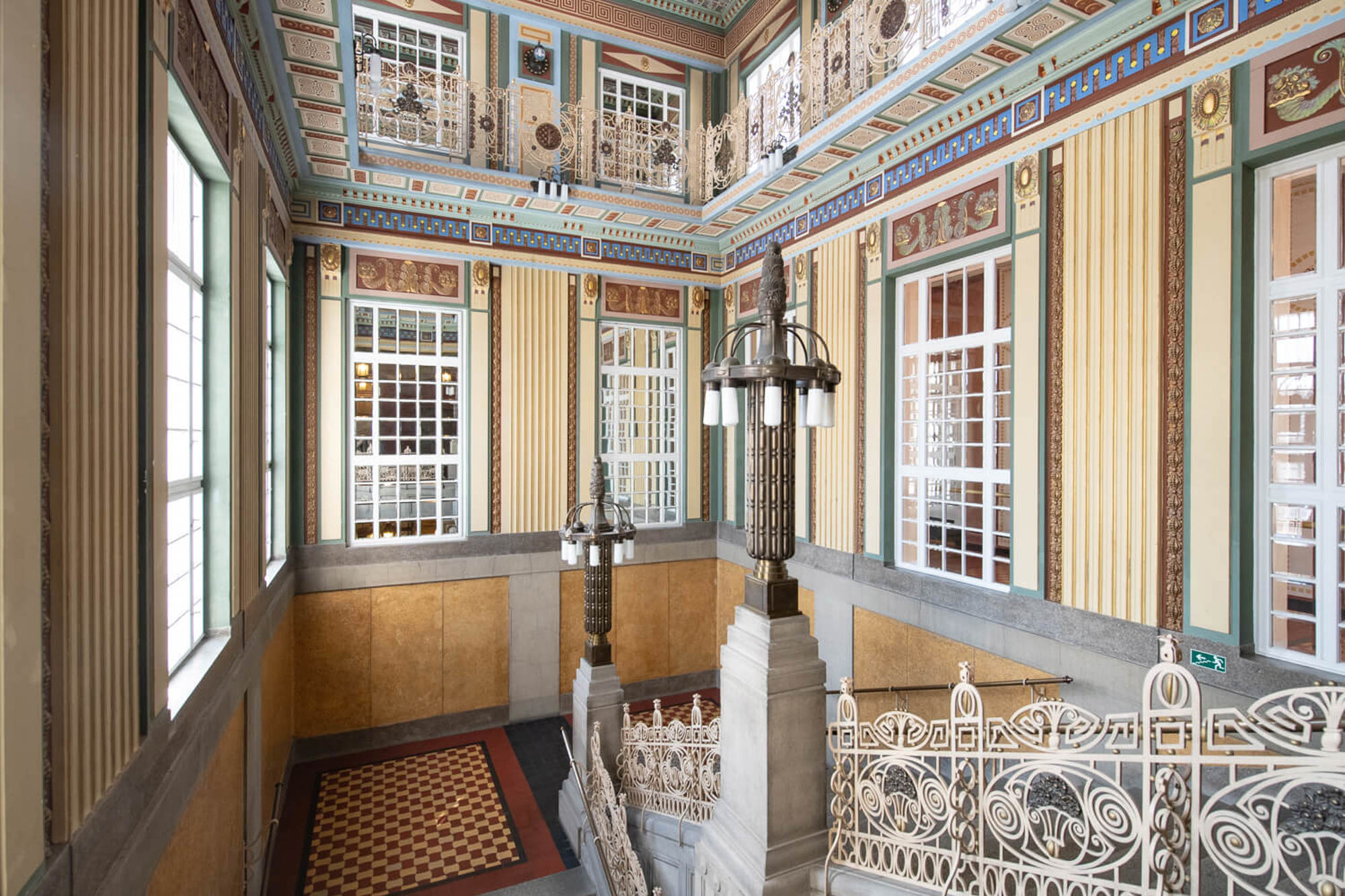
Location Tours for a Variety of Film Professions
The Czech Film Commission organizes 5-6 location tours every year, some of which are two-day excursions (such as this one in the Olomouc and Zlin regions); others are just one day (such as during the Karlovy Vary IFF or Finale Pilsen). All, however, are planned for a wide range of film professions. The filmmakers who set off with us to explore this time included a film architect, producer, director, screenwriter, and a location manager.
The fact that everyone gets something useful out of these location tours is confirmed by one of the participants, producer Peter Koza: “I’m happy to recommend (these location tours) to friends and colleagues in the industry. I’ve always thought it was a great idea to give filmmakers the chance to check out places with potential for filming. Location managers, in particular - it allows them to add locations to their databases. As a producer, I appreciate the contacts I make.”
Olomouc’s Filmable Features
Our first stop in Olomouc was the recently renovated Church of St. Moritz, known for its amazingly photogenic double/spindle staircase, which we had the chance to admire when ascending to the top of the 50m observation tower. Below us, a 360-degree panoramic view of the university town opened up, with the archbishops’ palaces, fountains, and modern architecture.
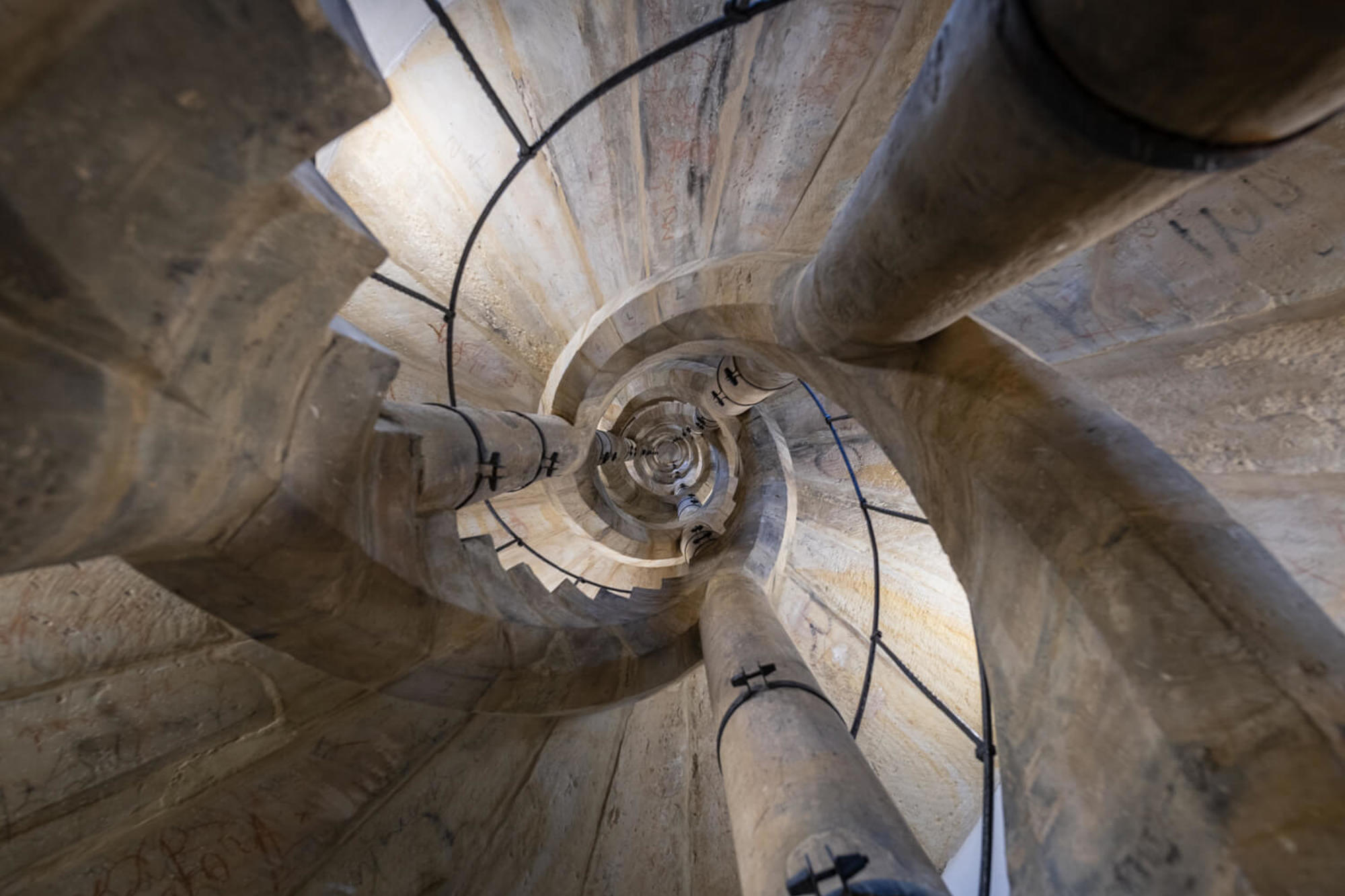
The largest Gothic sanctuary in Moravia has served as the town’s main church since the Middle Ages. Among its jewels are the sculpture of the Olivet Mountain and the Engler Organ, which is one of the largest in Central Europe.
From the church, we headed for the nearby Town Hall. The quadruple-winged majestic building with a clock tower is the centerpiece of Horni (Upper) Square. Since the 15th century, its facade has been decorated with one of the few heliocentric astronomical clocks in the world (where the Sun appears as the center of the universe), later curiously decorated in the spirit of socialist realism.
We had a unique opportunity to look inside the monumental Holy Trinity Column on the square in front of the town hall. It conceals a tiny chapel where Maria Theresa is said to have prayed.
The column is included on the UNESCO World Heritage List, and the entire historical center of Olomouc is the second most significant historic preservation city zone in the Czech Republic.
“Olomouc is a beautiful city with many motifs for artistic and filmmaking purposes, both in exteriors and interiors, especially in the Archbishop’s Palace,” said film architect Olga Rosenfelderova about our latest Olomouc location.
The Renaissance, later Baroque, style Archbishop’s Palace is famous for its impressive Ceremonial Hall with elaborate stucco decoration, where T. G. Masaryk, Vaclav Havel and John Paul II delivered speeches. We also had the opportunity to look into the lesser-known corners of the palace, such as the garden with the statue of the Virgin Mary and the dilapidated orangery and the courtyard with garages from the 1970s.
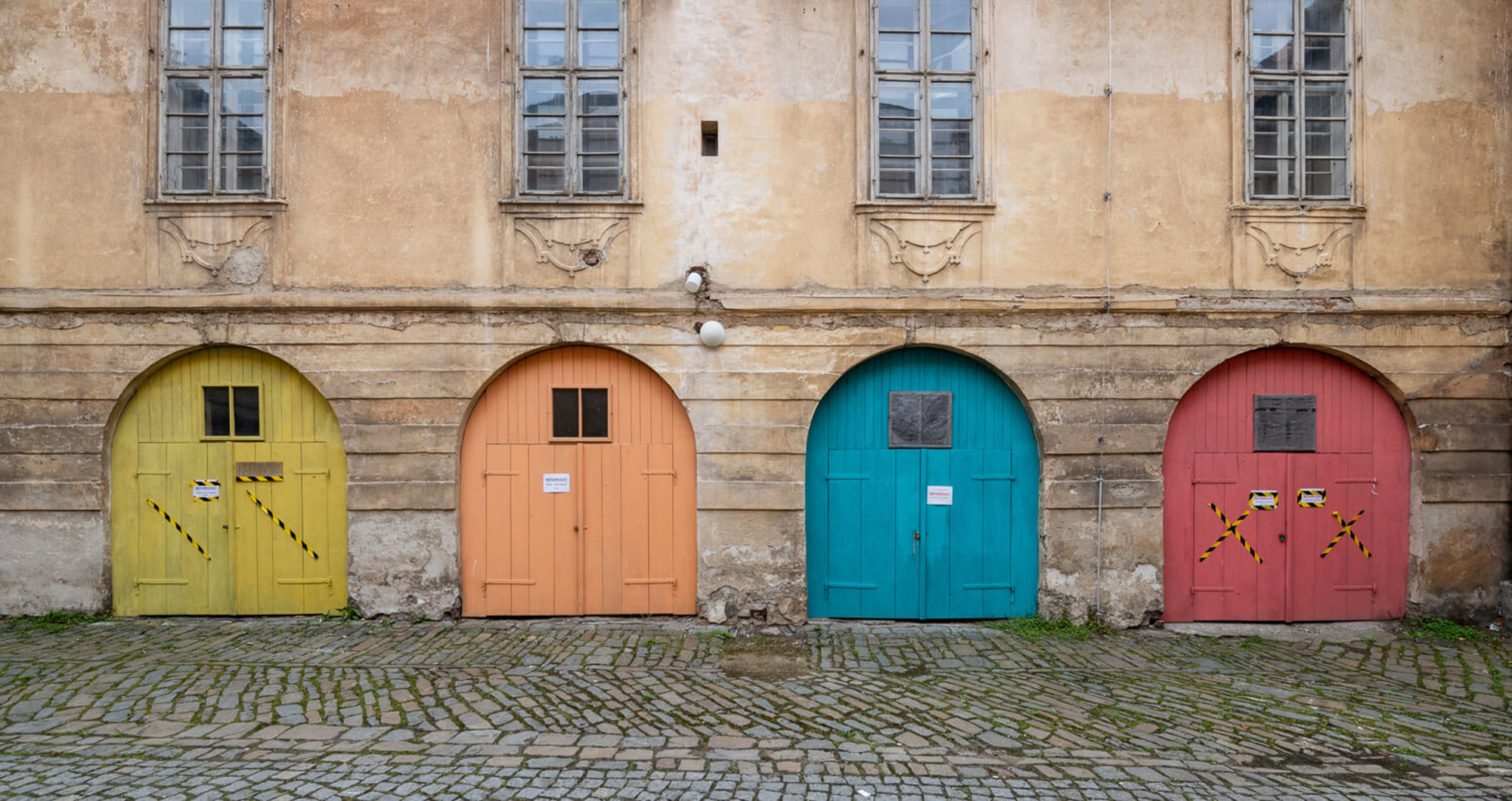
Networking with Management of New Locations
We then moved to Prostejov, and since we visited a factory shop with a famous local delicacy in Olomouc, several carefully sealed bags traveled with us in the minibus, which nevertheless persistently made their contents known.
The tvaruzky (a type of stinky cheese) broke the ice, and lively networking started among the participants and organizers, which lasted until our farewell at the Prague train station the next day.
Edita Ruzickova from the Zlin Film Office appreciated the opportunity “to meet new filmmakers, which is important for building contacts so that we know about each other. I think it’s good for filmmakers to get to know the person who represents the film office personally and to whom they can turn when filming in the Zlin Region. The “building” of relationships and contacts is better in the pleasant atmosphere of a location tour when we visit interesting locations in the region together and can talk informally. Meeting in person has its advantages.”
The filmmakers also established contacts with the management of the locations: “It’s great that we get the chance to talk to important people and network during a location tour. We can speak directly with the administrators and managers of individual locations, share experiences, and learn more about the filming conditions,” said location manager Tomas Hasl.
There was also room for deepening the cooperation between the representatives of the two regional film offices, who organized this tour together. “I’m glad to have established contact with Michael Zacek from the Olomouc Region Film Office,” confirmed Edita Ruzickova, and said that she plans to work with the Olomouc office on another project that the Zlin Film Office is putting together.
Unexpected Discoveries in Prostejov
“I was impressed by the town hall with its beautiful staircase, the hall, and the charming lounge with its interesting furnishings. The National House is also well-suited for a period film in terms of the preserved original architecture,” says Olga Rosenfelderova about the Prostejov locations.
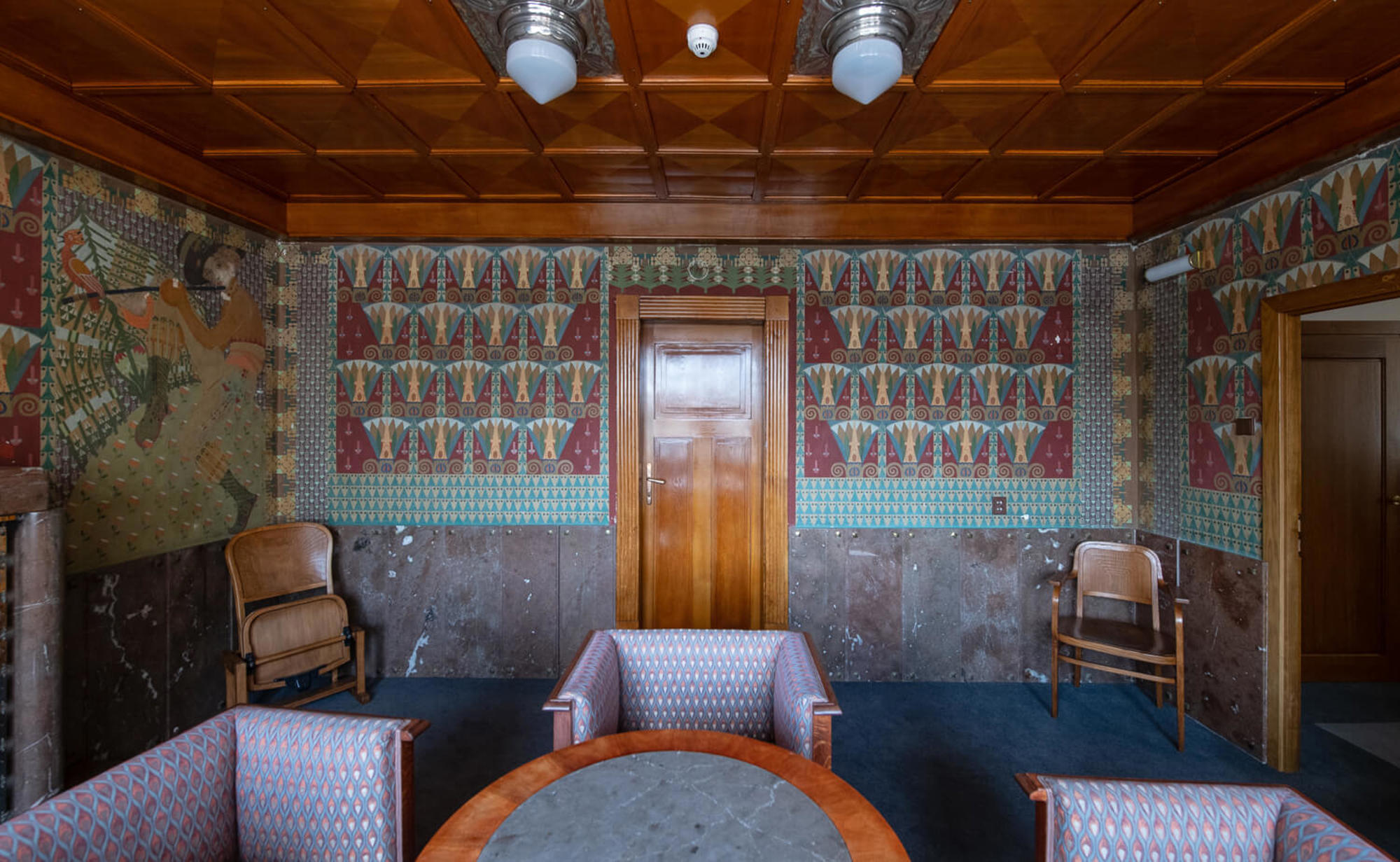
First, we visited the city’s architectural landmark and cultural and social center - the National House, built between 1905 and 1907 and designed by Jan Kotera. Works by painters Jan Preisler and Frantisek Kysela and sculptors Stanislav Sucharda, Bohumil Kafka, and Karel Petr decorate the architecturally exceptional building.
The stylishly clean interior of the building houses an Art Nouveau restaurant and café, a theatre hall and rooms for social activities. At first glance, the striking ceiling paintings and elegant period light fixtures are quite captivating.
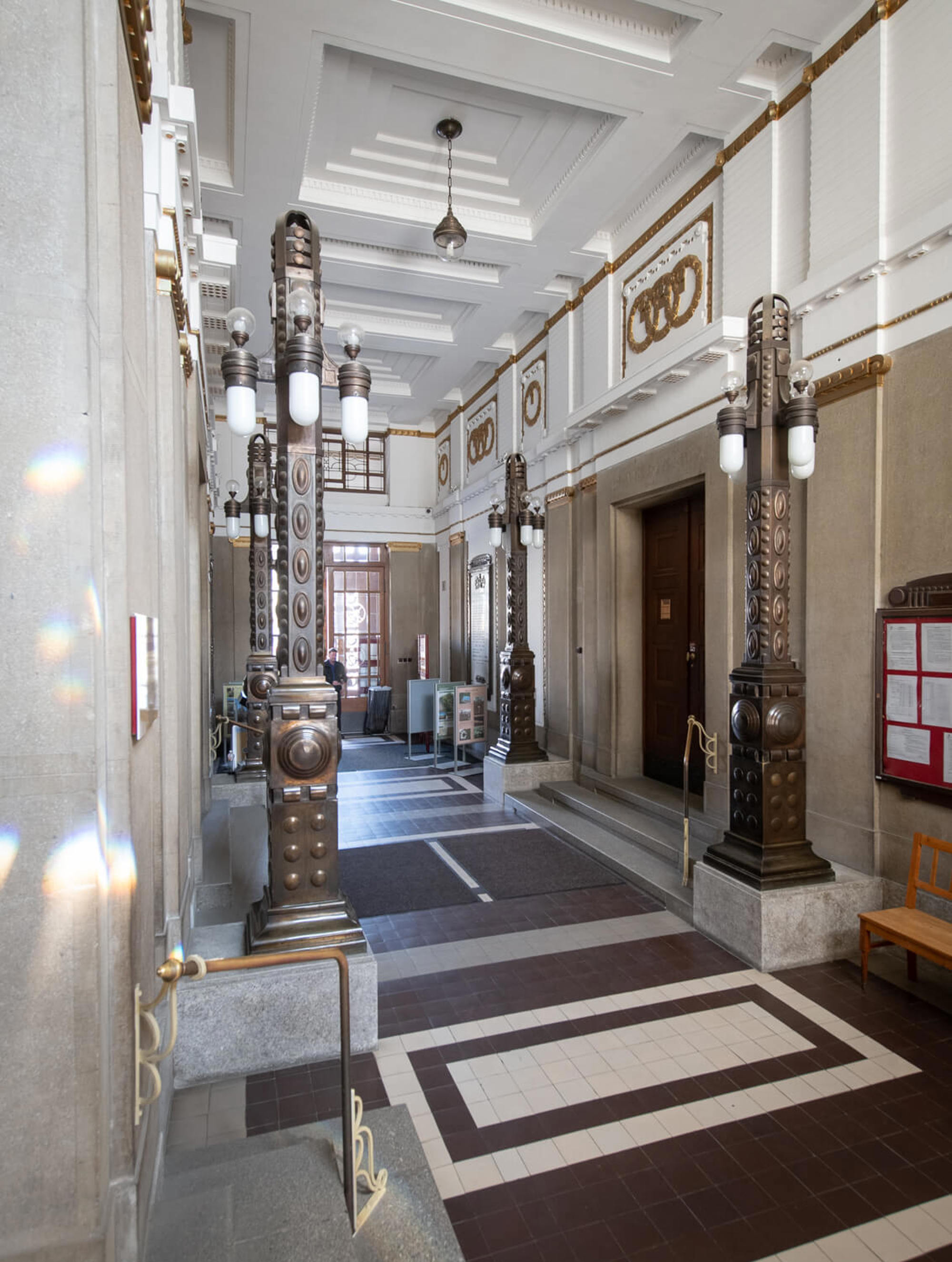
The Art Nouveau New Town Hall in Prostejov, with its original stucco, metalwork, sculpture, and paintings, was also a surprise for us. The Town Hall impresses with its staircase richly decorated with colorful paintings, Art Nouveau lamps, and ornamental railings. And its meeting room with its paneling made of seven types of wood and original furnishings is also exceptional.
Phantom Castle Plumlov
We had 15 minutes to process our new impressions while gazing out the minibus window on the way to Plumlov. Here, next to the castle founded at the turn of the 14th century, a so-called “high castle” in Mannerist style influenced by the Italian Renaissance was built in 1680-1688. From the original plans for a four-winged castle, only one wing was built. Until 1801, the castle and chateau stood side by side. After a storm damaged both buildings, the then owner, Alois of Liechtenstein, had the castle demolished. Its remains form a hill in the courtyard of the chateau.

The magnificent building with a columned facade rises above the Podhradsky pond near the Plumlov reservoir. Rising high above the surroundings, the lone wing of the chateau looks like something from another world. Parts of the interior, including the chateau prison, are open to the public. Some areas serve as exhibition spaces. The chateau’s advantage is the minimal furnishings. Other spaces are gradually undergoing renovation.
What Filmmakers Have Not Yet Discovered in Kromeriz
The evening program featured a tour of the extensive original cellars of the Archbishop’s Castle in Kromeriz, which are used for storage and archiving of the mass wine. The black coloring of the vaulted cellar ceilings is evidence of wine cellar mold, which, we were assured, is proof of an environment ideal in terms of temperature and humidity for wine archiving.
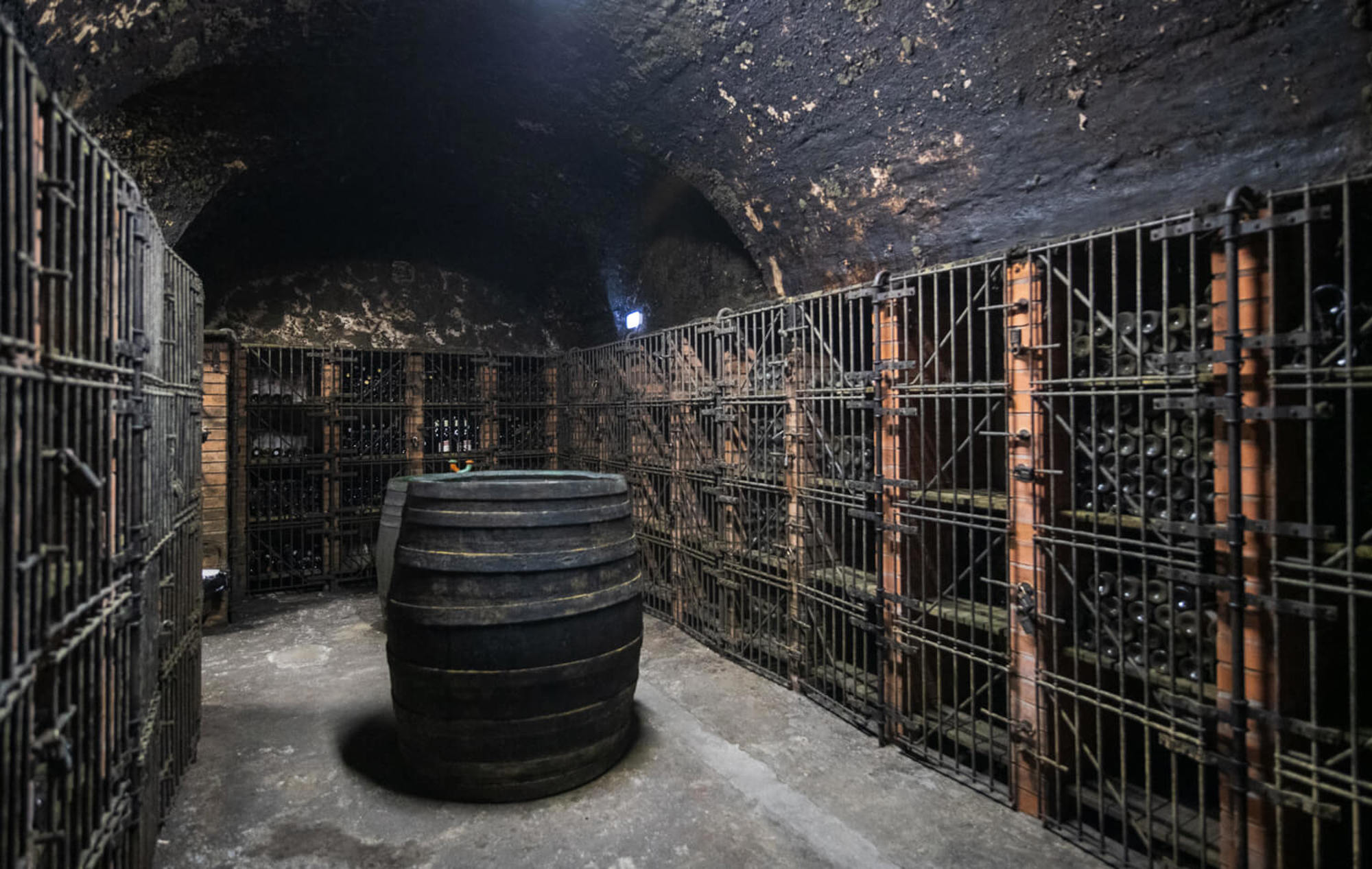
The Kromeriz Chateau has been well-known to filmmakers since the 1980s when Milos Forman shot Amadeus here. However, we had the opportunity to look at some lesser-known corners of the chateau, accompanied by the director of the Archbishop’s Chateau and Gardens Administration Jiri Uhlir, including the High Granary, the Mill Gate, and the Archbishop’s Waterworks.
The Baroque granary, partially renovated, is a massive building with two floors with brick vaulted ceilings, one floor with a wooden beam ceiling, and two floors with the original roof trusses.
The Mill Gate is connected to the Archbishop’s Castle - a corridor leads from the Archbishop’s Guard building through the Archbishop’s School to St. Moritz Church. The interior of the gate conceals rooms inhabited by the guards.
“The inclusion of the Archbishop’s Waterworks was great,” enthused Tomas Hasl about the next item on the agenda. This unique technical monument supplied water to the chateau, the brewery, and fountains in the town and was operational until 1963. Inside, you can see the original mechanism and several other reconstructed areas: the former coin mint and what’s now the mirrored ballroom.

Tovacov: Variety of Motifs in One Place
A 30-minute drive from Kromeriz took us to Tovacov Chateau, which offers filmmakers a variety of motifs, something director Tomas Vorel appreciates; “Locations that offer multiple interesting settings in one place are extremely practical. Like our second-to-last location - Tovacov Chateau - which seems to have so many potential uses.”
A long row of empty buildings with an arched arcade on the first floor flanks the expansive lawn with mature trees in front of the chateau. Numerous institutions have occupied the space here, and the buildings currently remain unused.
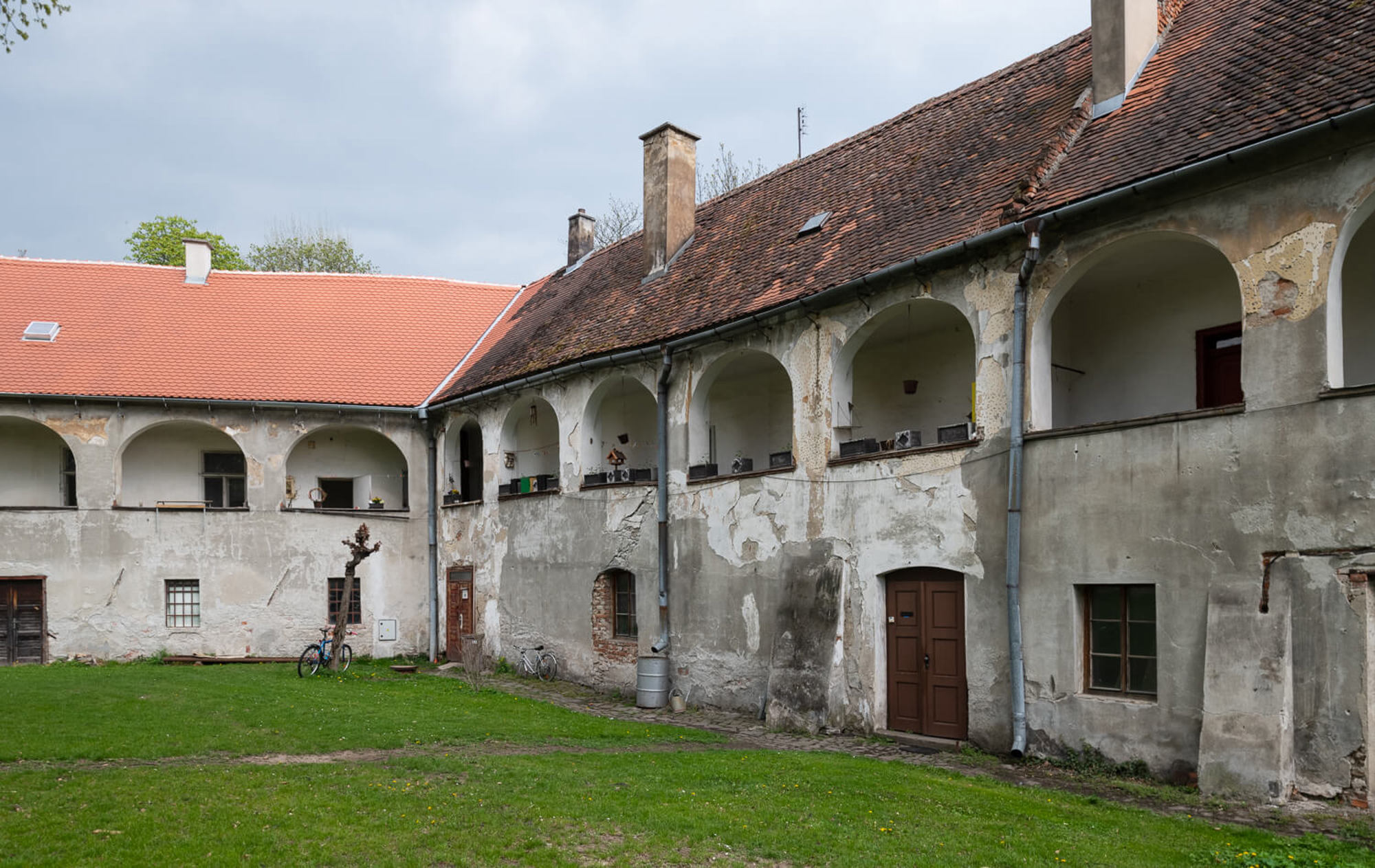
The treasure of the chateau (featuring the highest chateau tower in the Czech Republic) is its impressive “Viennese” staircase guarded by statues of 2 lions, which Olga Rosenfelderova admired: “I was particularly impressed by the interiors of Tovacov, in particular the staircase. Such beauty is hard to find. Many of the rooms are also very usable for period films, such as the bathrooms - they’re excellent.”
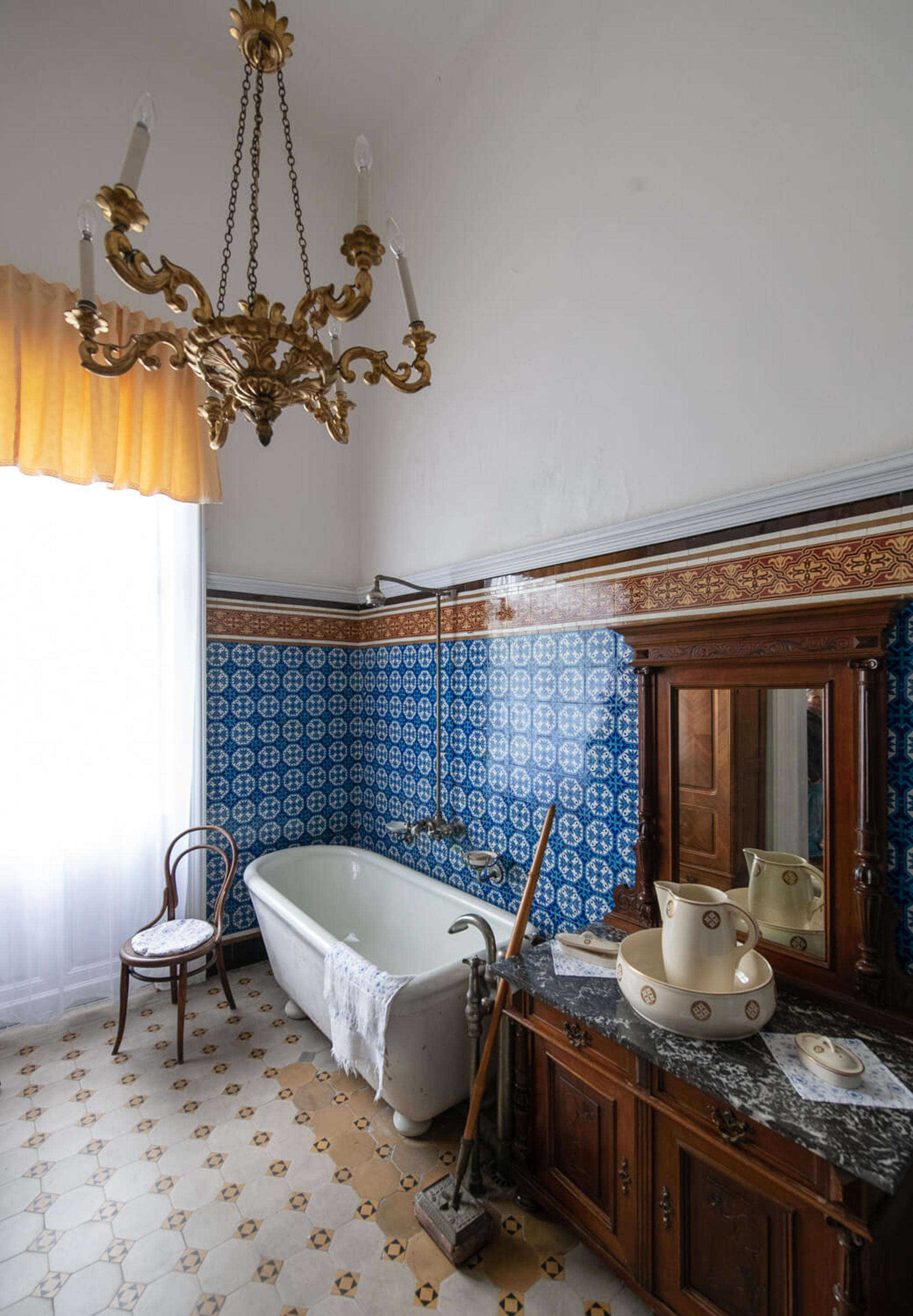
Fortress with Underground Passageways
The final stop of the location tour was Fort Krelov, where the caretaker had prepared a little adventure for us. The polygonal fortress is one of four built since 1850 to the west and southwest of the Olomouc fortress. The vast complex covers an area of 60,000 sqm.
The fortress is maintained by a private owner, who renovated the building and currently holds cultural events and exhibitions there, and also operates a shooting range. There’s a restaurant for visitors, and accommodation is available for a small number of guests.
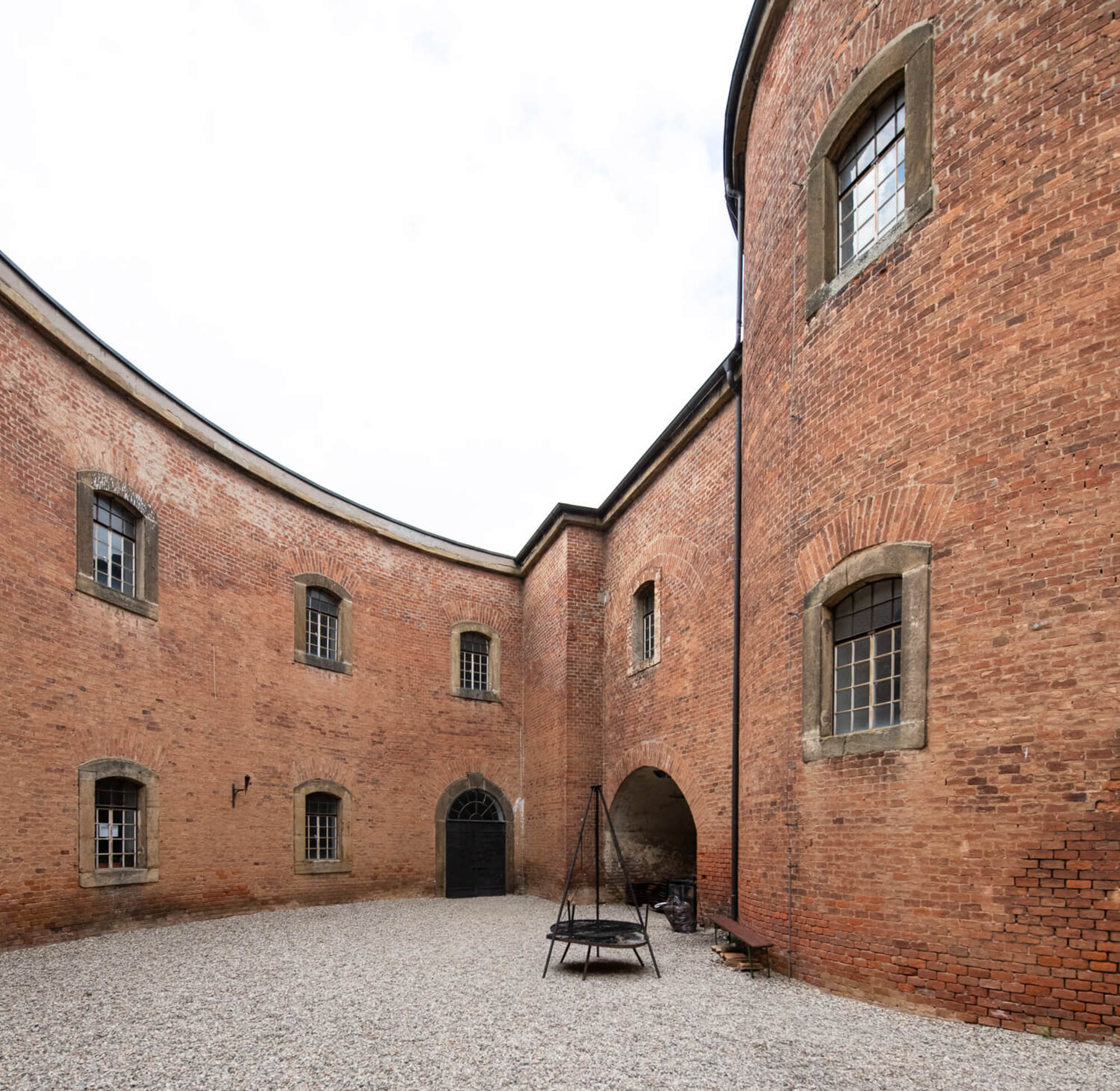
Dark underground passageways surround the building - the caretaker sent us off to explore them with lanterns. After some spine-tingling exploration and moments when we wondered how we’d find our way out, we came upon the caretaker, who welcomed us at the exit with an amused smile.
New Locations and New Contacts
The location tour through the Olomouc and Zlin regions was chock full of discoveries. “I had never seen the interiors of the National Building or the New Town Hall in Prostejov, and I saw the Plumlov and Tovacov chateaus and the Krelov fortress for the first time,” admitted producer, director, and screenwriter Martin Vadas. “I’ve been on your tours in the Pardubice and Hradec Kralove regions, and in Ostrava and the surrounding areas. And now Olomouc and Kromeriz - I’ve had so many great experiences. I have nothing but praise for how the Czech Film Commission and the regional offices organize the tours and the warm welcome we receive at locations from the local guides.
Michael Zacek is aware of the importance of meetings with caretakers and operators and has planned them carefully in advance: “I’ve found it essential that the location be presented by the person who knows the most about it and can answer specific questions that are crucial for the shoot.”
Edita Rizickova was also delighted with the tours: “I think that the location tour and the personal contacts can help filmmakers return to our region to film.”
If our location tours speak to you, if you’re an active filmmaker and want to join us, get in touch, and we’ll be happy to send you an invitation to our next location tour.
Contact for filming in the Olomouc Region:
Olomouc Region Film Office, Michael Žáček (michael.zacek@centralaok.cz, +420 775 863 537)
Contact for filming in the Zlin Region:
Zlin Film Office, Edita Růžičková (info@zlin-film.cz, +420 778 515 500)
